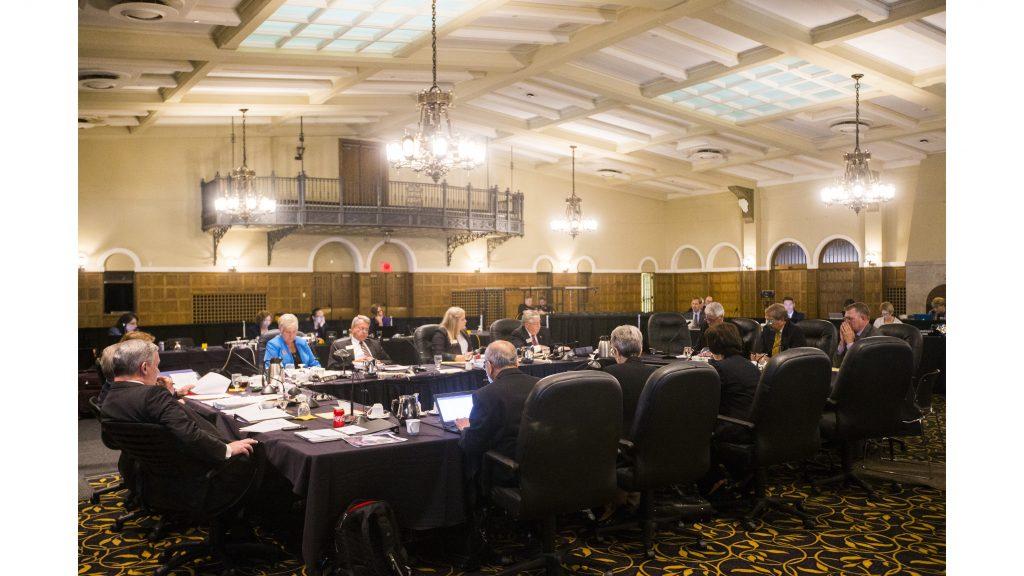With limited ability to offer faculty competitive wages as state support lags, Iowa’s public universities have seen nonclinical faculty leave for other universities.
Now, university administrators at the three regent universities — Iowa State University, the University of Iowa, and the University of Northern Iowa — are left to figure out how to remain competitive to keep faculty at their institutions.
There are many factors contributing to faculty’s decision to leave for different universities, but salaries and resources have played a role in the departures.
At the state Board of Regents’ Academic and Student Affairs Committee meeting Wednesday, UI interim Executive Vice President and Provost Sue Curry noted that the UI tends to hire junior faculty because of limited resources, but once they are able to gain tenure, they become more marketable to other institutions.
In the face of the rise in nonclinical faculty resignations across the regent universities, the UI saw a decline from 2016-17, decreasing from 4 percent of total faculty to 3.1 percent.
“One of our deans was at a national meeting, and his college was referred to as the AAA baseball club,” Curry said. “That’s where you recruit all the great players to go to the majors. It’s a system, and it’s not a good one.”
RELATED: University of Iowa wrestles with retaining faculty
At the UI, 30 percent of faculty-resignation questionnaires were returned in fiscal 2017. Those surveys showed the lowest area of satisfaction was compensation.
Raising faculty salaries has been a top priority for the UI in hopes of remaining competitive, and in 2017, the UI allocated $4.8 million to increase compensation.
“… We’re competing in terms of quality, and programs, and support systems for our students, and faculty salaries and dorms — all the rest, against these other institutions,” UI President Bruce Harreld told The Daily Iowan in December 2017, noting the UI’s efforts to maintain quality in light of the state’s trend of cutting funding for higher education.
The universities gather the data by using a variety of methods, including resignation surveys, exit interviews, satisfaction/climate assessment surveys, and payroll reports.
According to regents’ documents, 57 percent of resignations in 2013-17 in the three universities were the result of faculty accepting a position at a different university. This is up 6 percent from 2008-12.
In fiscal 2017, the UI had 67 percent of faculty resignations for this reason.
The 65 percent of faculty who have left ISU during fiscal 2017 indicated there was better opportunity elsewhere in an online faculty-exit survey, and 43.5 percent of respondents also said their salary in their new position was much higher than what they earned at ISU.
From 2016-17, ISU saw the largest increase of faculty resignations among the regent universities, increasing from 1.7 percent of total faculty to 3.2 percent.
“There are many reasons faculty resign,” ISU Associate Provost for Faculty Dawn Bratsch-Prince said. “Each one is a story, but certainly not having salary increases last year and the uncertainty about salary increases this year is part of that, and other institutions are watching, and they swoop in and try to recruit away our faculty.”
The UNI saw an increase from 2.6 percent of total faculty resigning to 3.1 percent from 2016-2017. Nine faculty members resigned to take a position at another institution.
“We on a regular basis are having to try to make counter offers, but we generally cannot match the offers that are made to faculty as they are recruited from other institutions,” UNI Associate Provost for Faculty John Vallentine said.



